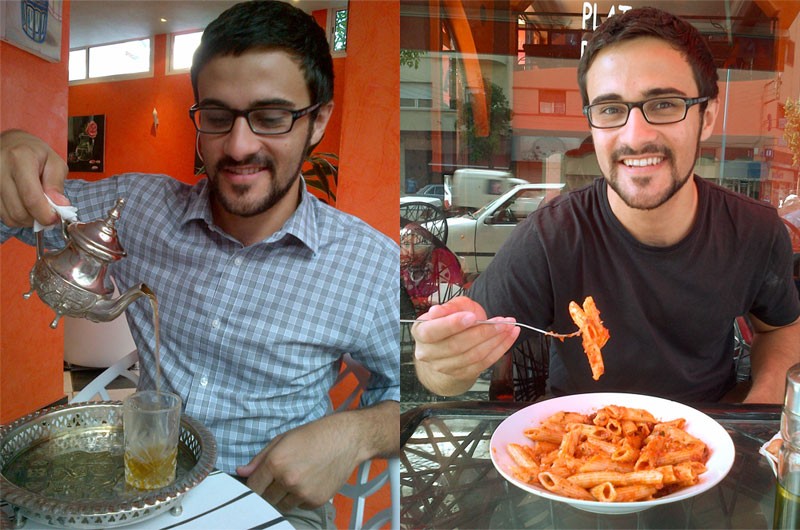
Typical Moroccan cuisine: mint tea and pasta.
Yes, pasta. The streets of Casablanca are teeming with different versions of basically the same cafe that serve pizza, pasta, and paninis.
Casablanca: first impressions
We’ve been in Morocco for three weeks now, and as I said in my last post, I’m trying to think of Casablanca as my new home. So why not start with a tour of our apartment?
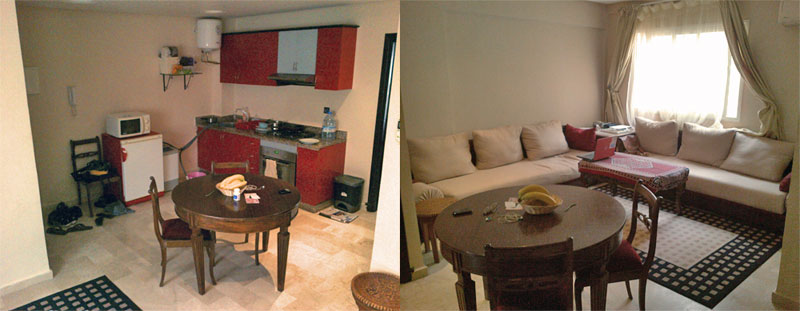
Kitchen, dining area, and living room. Facing the kitchen, our front door is to the left, and the bathroom and bedroom are to the right.
We live in the Maârif neighbourhood, a dense grid of narrow streets packed tight with mid-century apartments (we’re on the fifth floor of a six-storey building). We’re steps from local fruit, fish, and bread vendors, a small grocery store, innumerable cafes, restaurants, and a lovely pedestrian mall.
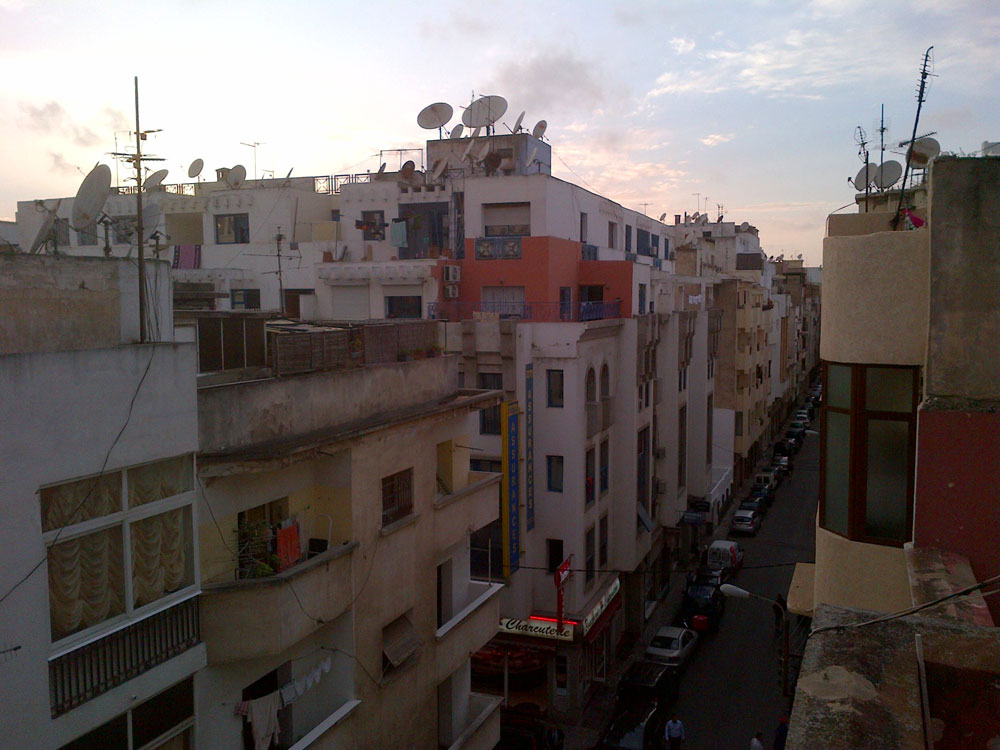
The view from our balcony at dusk.
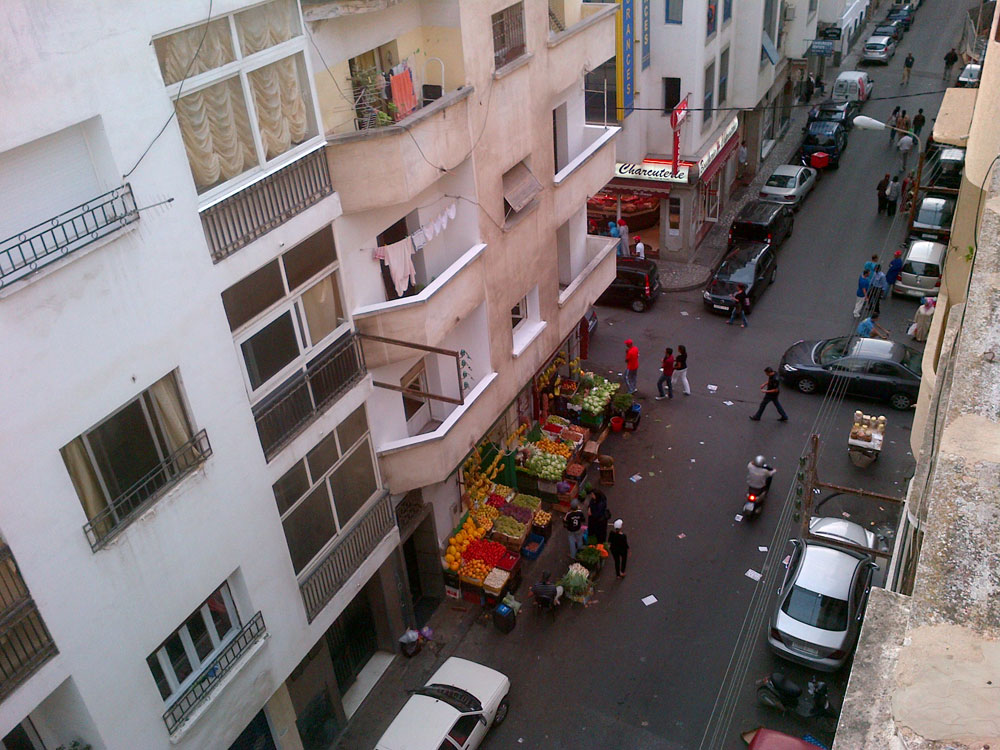
Looking down, you can see our friendly neighbourhood produce vendor and the bustle of everyday life. Good luck finding a parking spot!
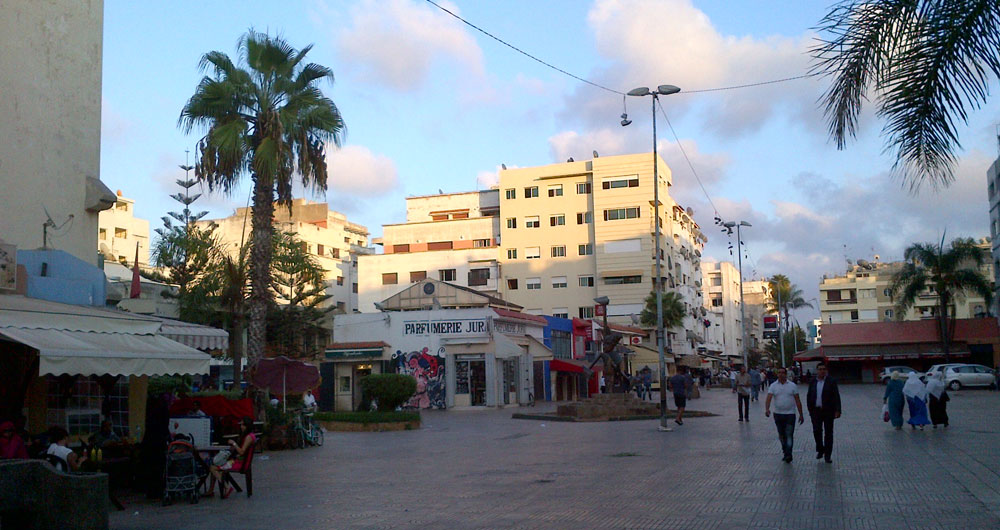
Rue Oussama Ibnou Zaid is a pedestrian mall lined with cafes, bookshops, clothing stores, and offices. The Maârif cultural centre is just on the left edge of this photo.
What’s interesting is that I haven’t laid eyes on a single-detached house since arriving in Morocco three weeks ago. Other than spotting a few clusters of farmhouses during the descent toward Casablanca’s Mohamed V airport, it’s apartment buildings as far as the eye can see. From the historic medina, to the oceanfront entertainment district, to the outskirts of town, to blank-slate greenfield developments, Casablanca’s urban form is a consistent swath of 3-to-6 storey brick and concrete apartments. One exception I can think of, but haven’t seen yet, is the seaside villas.
In and around Maârif, there are quite a few construction projects going on. Most are small-scale, making use of manual labour more so than cranes and heavy machinery. Not to say that megablock developments don’t exist here, but most of the construction activity looks like this:
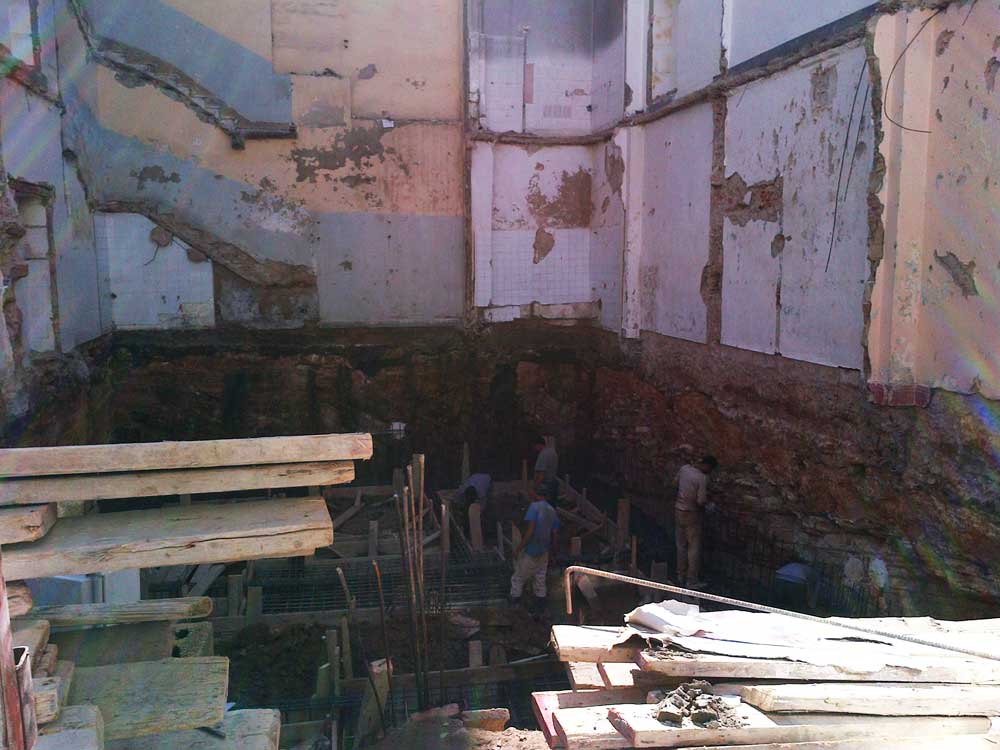
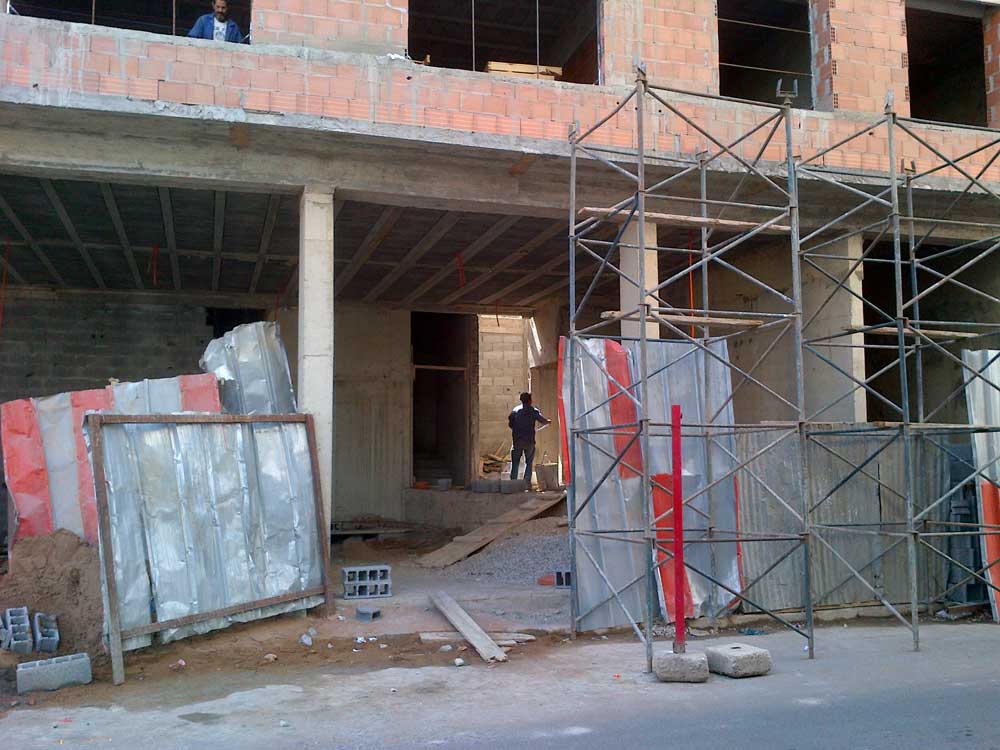
A 30-minute walk north of us is the Parc de la Ligue Arabe – a veritable oasis in the middle of the city. This is where young couples go to sit and hold hands, where middle-aged men gather for a game of boccee, where kids play a dusty game of soccer, and where lots of people simply walk through on their way from point A to point B.
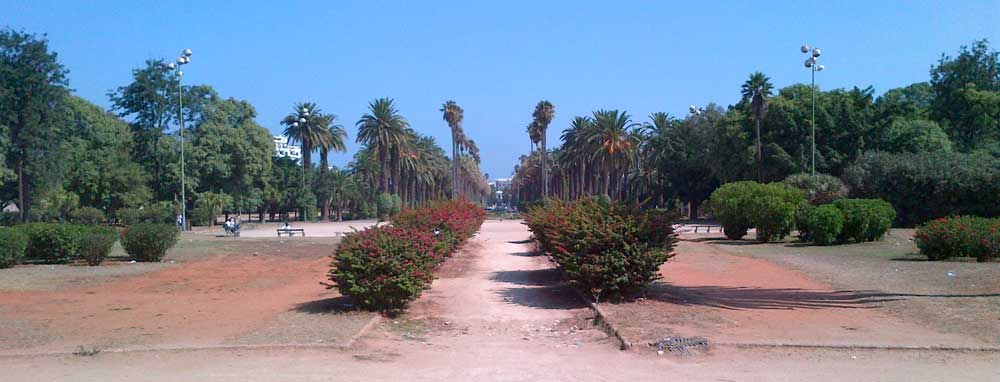
The park is also home to l’Église du Sacré-Coeur de Casablanca. Really, it’s a focal point for people of all walks of life.
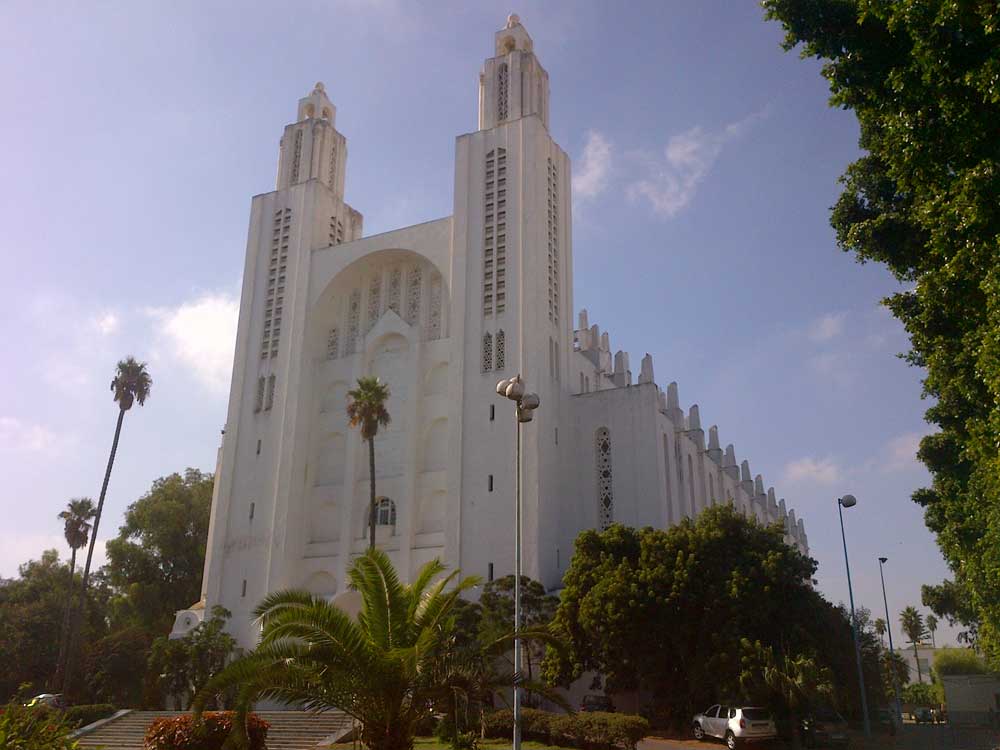
A short tram ride away is the Place des Nations Unies, a large public square like the one in Maârif but with more people and trendy street furniture:
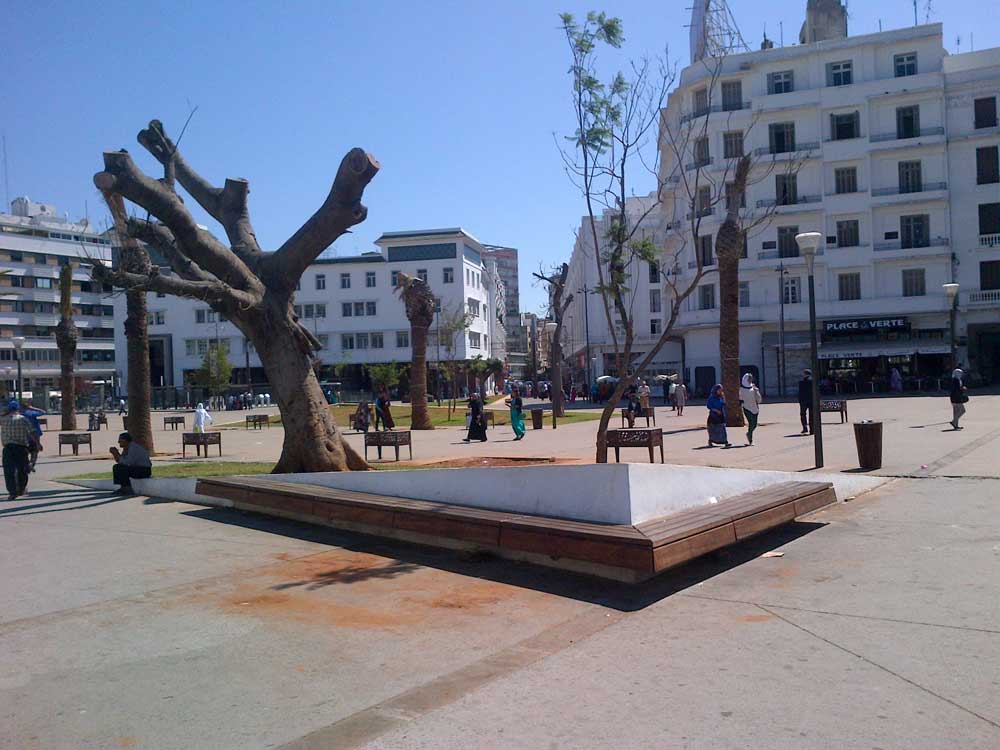
In an innovative bit of station design, the tramway runs right through Place des Nations Unies at a level grade, allowing for the free flow of pedestrian movement when the trains aren’t there. When they do approach, the trains slow down and people get out of the way.
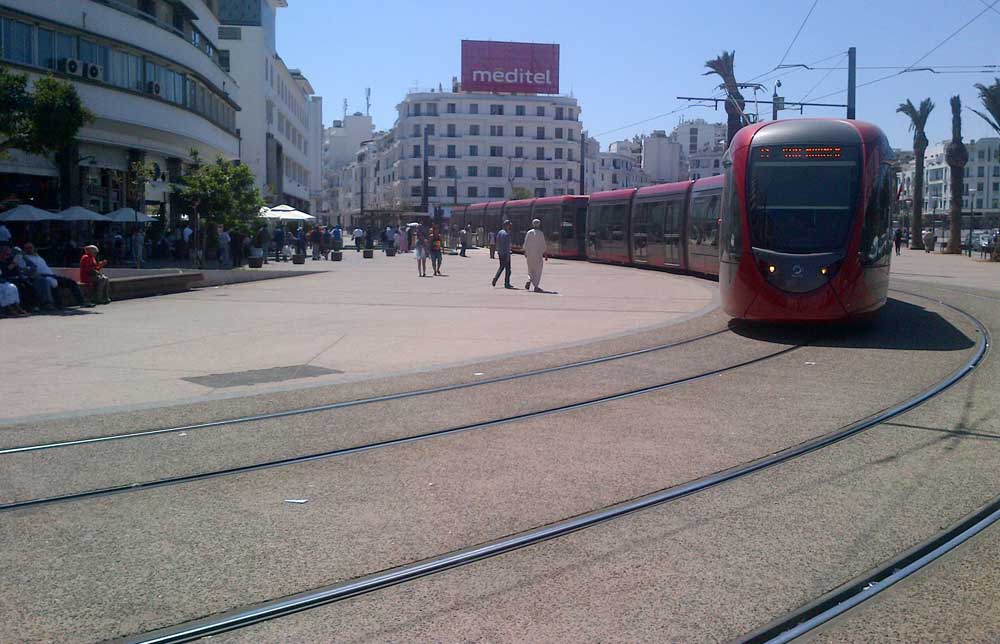
Speaking of transportation design, many of Casablanca’s major arterial roads have an underpass in the middle lanes, which is not something I’ve ever seen or heard of before. The underpasses let through traffic zip along for three or four major blocks at a time, avoiding the cross-traffic of intersections.
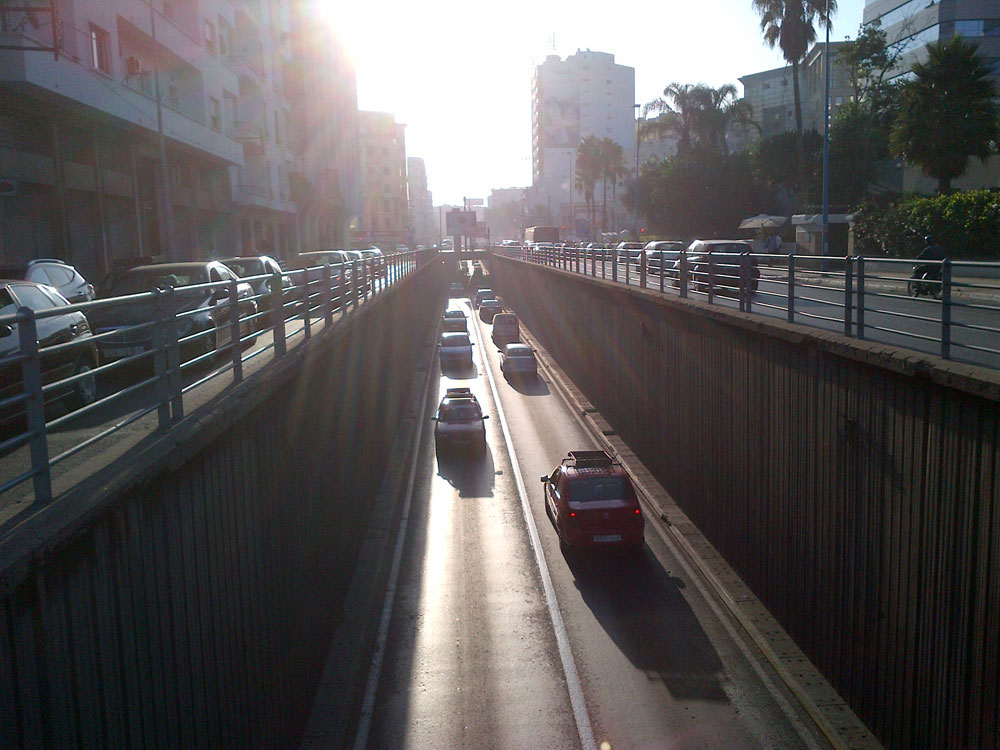
If you spend even a little bit of time walking around Casablanca, you’ll notice that sidewalks are often out of commission. Sometimes a shop has taken over the entire width of the sidewalk, or a garbage bin is blocking the way, but more often than not it’s because cars are parked there.
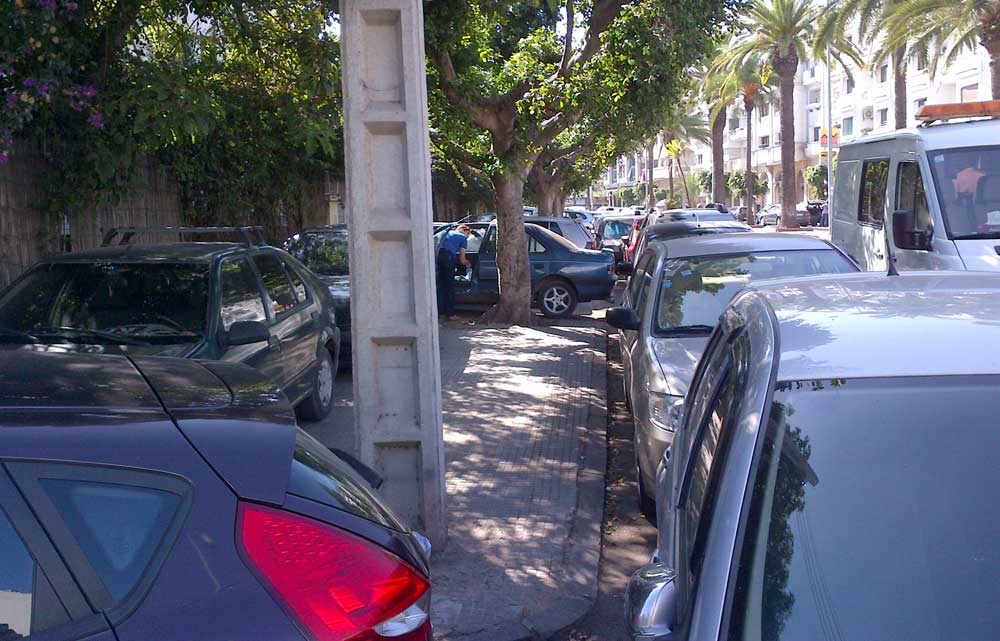
The concept of a legal parking space appears to be a bit fuzzy here… cars will take any space they can get, and double-parking is par for the course.
While I’m talking about transportation, I might as well show a photo of the main train station in Casablanca – Casa Voyageurs. We arrived here by train from the airport, and Casa Voyageurs was our point of departure for a trip to Rabat last week, to attend the 2nd Global Conference de Rabat (but more on conferences another time).
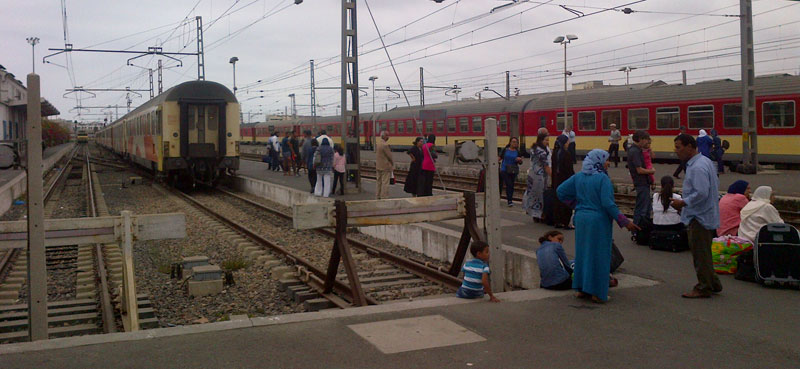
I’ll end this post on a note about food. In short, it’s delicious and inexpensive. There are 8 dirhams to a Canadian dollar, and a fresh baguette costs 1.20 DH. A smoothie with fresh-squeezed oranges and mangoes? Around 10 DH. Fresh orange juice is everywhere, and boy do they love their pulp. I mean, straw-standing-up-on-its-own kind of pulp:
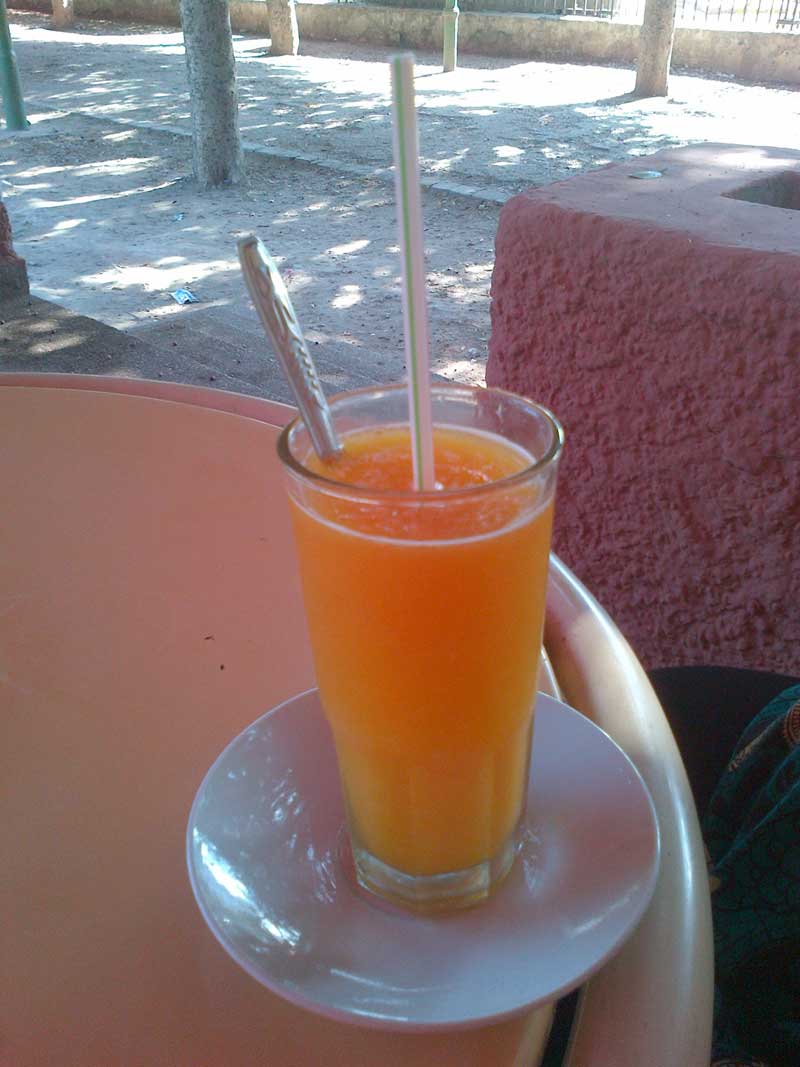
Delicious.
Of course, Morocco was under French colonial rule for some time, but it appears their influence on the country’s cuisine is mainly focused on breakfast – which is completely fine by me. An assortment of pastries to get the day started? Yes please.
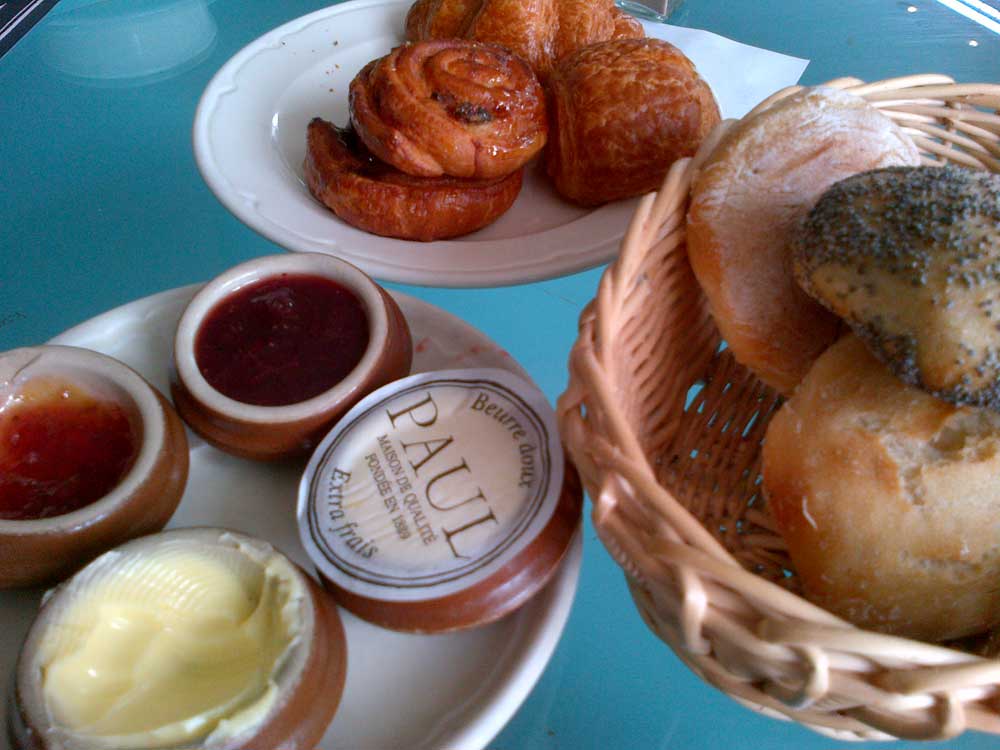
Melissa is blogging too! Check out her latest post for photos of street art that I didn’t include here.
Sam Nabi
Comments
Great to see you’ve settled nicely, Sam. Nice looking spot to hang your hat and it sounds like a very exciting and exotic place to live. Enjoy your adventure :)
The food/beverage photos made me hungry! Interesting article about the<br>tram and how people were so skeptical about it. How does a city determine whether to use a tram, train or subway?
Have you seen any wildlife yet? I wonder if there are doves or pigeons in the city.
There are a lot of feral cats around our neighbourhood… This is about as close as we get to wildlife in the city! Also, there are a few shops that have been turned into lodgings for sheep and rams, soon to be sacrificed for the upcoming Eid-Al-Adha holiday.
Post a comment